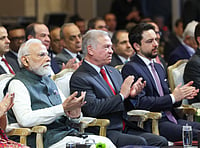The United States Congress has given the green light to the GE Aerospace and Hindustan Aeronautics Limited (HAL) collaboration to produce fighter jet engines for the Indian Air Force. This development is a notable stride in bolstering defense ties between India and the US. The agreement, which was formulated during Prime Minister Narendra Modi's visit to the US in June, involves the production of F-414 jet engines within India.
With a focus on enhancing technology transfer, local manufacturing, and licensing arrangements, the deal marks a significant milestone. Capitol Hill insiders have revealed that the legislative process has smoothly progressed, paving the way for the Biden administration to advance the agreement.
Senior officials have hinted at the potential for this agreement to serve as a model for future collaborations, addressing India's concerns over technology sharing and co-production. This arrangement holds immense value for India, bridging the technology gap in jet engine development, and subsequently reinforcing its defense capabilities, especially in light of regional complexities, Hindustan Times reported.
The technicalities of the deal are equally noteworthy. The agreement encompasses an impressive 80 percent technology transfer, amounting to an approximate value of $1 billion. This infusion of technology will elevate the indigenous content of the new fighter jet to around 75 percent, a substantial leap from the existing variants. This progress is expected to culminate in the signing of the agreement within the current fiscal year and the commencement of engine production in India within three years.
Intriguingly, the technology transfer includes a comprehensive spectrum of critical areas that were previously restricted, marking a remarkable evolution in cooperation. This embrace of intricate engine technologies, ranging from single crystal turbine blades to advanced ceramics, is a clear testament to the evolving collaboration between the two nations.
As the deal is set to transform India's defense landscape, experts anticipate that the forthcoming discussions during President Biden's visit for the G20 summit in September will delve into the operationalization of this landmark agreement. The underpinning principle of technology transfer aligns well with India's aspiration to establish a robust domestic defense industrial base, while strengthening the bond between the two countries' defense ecosystems.
The resulting aircraft, dubbed the LCA Mk2, embodies a series of advancements that elevate its capabilities over its predecessors. It will wield superior speed, range, and payload capacity, accompanied by a versatile array of weaponry.


























